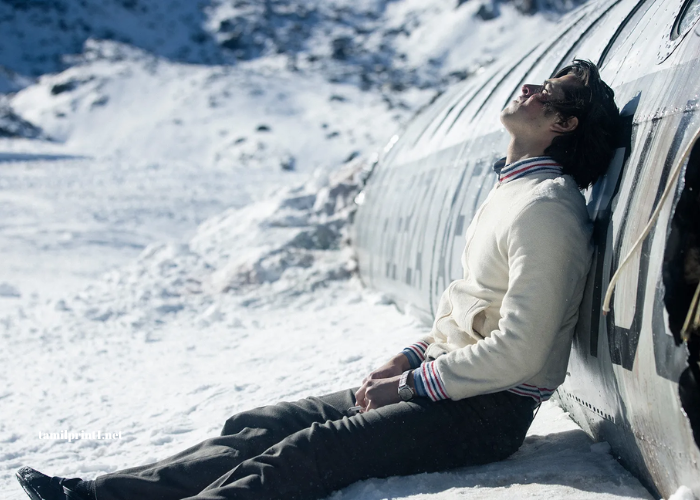In the annals of human survival against all odds, few stories capture the depth of human endurance, resilience, and spirit like that of the 1972 Andes Flight Disaster, also known as the Society of the Snow. This harrowing event, often referred to as the Uruguayan Air Force Flight 571 crash, is a tale of survival amid unimaginable conditions, of loss and hope, and of the strength of the human will to live. While the incident itself has been the subject of various films, documentaries, and books, its legacy continues to inspire discussions about what humans are capable of when faced with seemingly insurmountable odds.
On October 13, 1972, a Uruguayan Air Force Fairchild FH-227D aircraft, carrying 45 passengers, crashed into the remote Andes Mountains while en route from Montevideo, Uruguay, to Santiago, Chile. What followed was an ordeal that lasted for over two months, during which the survivors faced extreme cold, avalanches, injuries, starvation, and the agonizing decision to resort to cannibalism in order to survive. This article delves into the event itself, the experiences of the survivors, and the broader societal implications and lessons learned from this tragedy.
The Crash: A Tragic Twist of Fate
The flight was primarily composed of young rugby players from the Old Christians Club, along with their friends and family members, on their way to a match in Chile. The crash was caused by a combination of factors, including poor weather conditions and navigational errors. As the plane descended through heavy clouds, the crew misjudged their position, believing they had cleared the Andes when, in fact, they were still deep within the mountainous range. The plane collided with a peak, tearing off both wings and sending the fuselage hurtling down a glacier, eventually coming to rest on a snow-covered slope.
Of the 45 passengers and crew members on board, 12 died in the initial crash or shortly thereafter due to their injuries. The survivors found themselves stranded in one of the most inhospitable environments on Earth, with no clear means of communication, no adequate clothing or shelter, and little food. For the first few days, they subsisted on the small amounts of food they had on the plane: chocolate, wine, and some snacks. However, it quickly became clear that these rations would not last long.
Movie : Society of the Snow (2024)
Actors : Enzo Vogrincic, Simon Hempe, Matías Recalt
Director : J.A. Bayona
Year : 2024
Language : Tamil
Genres : Adventure, Drama, History, eng
Rating : 7.7/10
Story : The flight of a rugby team crashes on a glacier in the Andes. The few passengers who survive the crash find themselves in one of the world’s toughest environments to survive.
Quality : HD DVD – Runtime :2 Hours, 24 Minutes
The Long Wait for Rescue: Desperation Sets In
After the crash, the survivors expected to be rescued within a few days. They built makeshift shelters using the remains of the plane and sent out signals hoping that search and rescue teams would locate them. However, their hopes were dashed when they heard on a small transistor radio that the search for the missing aircraft had been called off after several days of futile efforts to locate the wreckage. The news that the world had given up on finding them was devastating.
At an altitude of over 11,000 feet, the survivors faced temperatures that dropped to as low as -30°C (-22°F) at night. Many were injured, and all suffered from severe cold, hunger, and dehydration. Some survivors succumbed to their injuries, while others struggled with psychological despair. Over time, as their physical and mental conditions deteriorated, the group realized that their chances of survival depended on themselves, not on external help.
Cannibalism: A Controversial Decision for Survival
One of the most controversial and challenging decisions the survivors made was to resort to cannibalism. After weeks of starvation and without any prospect of rescue, they faced the grim reality that in order to stay alive, they would have to eat the bodies of their deceased friends and family members. This decision, made after much agonizing discussion, was born out of sheer necessity and a will to survive that overpowered their moral and emotional objections.
The group viewed the act not as a desecration of the dead but as a way to honor their memory by using their bodies to keep the living alive. They rationalized that this was the only way to continue the fight for survival, and that those who had died would have wanted them to use whatever means necessary to stay alive. Even so, the decision weighed heavily on the survivors, many of whom would later speak of the psychological toll it took on them. For those who lived through the ordeal, the act of consuming human flesh remained a deeply traumatic experience, one that haunted them for years to come.
The Journey to Find Help: A Trek Across the Mountains
By mid-December, with no sign of rescue and their physical conditions worsening, a small group of survivors decided to embark on an expedition to find help. This decision was not taken lightly, as the treacherous terrain of the Andes posed a significant threat to their lives. After several failed attempts to climb the surrounding peaks, three men—Fernando Parrado, Roberto Canessa, and Antonio Vizintín—were chosen to make the final trek. Armed with only rudimentary supplies, including bits of the plane’s insulation to protect them from the cold, they set out on a desperate journey to find civilization.
Their trek lasted for ten days, during which they traversed over 60 kilometers of steep, snow-covered mountains and glaciers. Along the way, they encountered numerous challenges, including avalanches, fatigue, and exhaustion. On the tenth day, they spotted a Chilean shepherd, Sergio Catalán, who helped them get in contact with local authorities. Thanks to their incredible effort and perseverance, rescue teams were finally able to locate the remaining survivors. On December 23, 1972, over two months after the crash, the remaining 16 survivors were rescued.
The Aftermath: A Story of Courage and Controversy
The rescue of the survivors was hailed as a miracle, and their story captivated the world. The sheer scale of their ordeal, and the lengths to which they had gone to survive, fascinated and horrified people in equal measure. While the survivors were celebrated as heroes, they also faced intense scrutiny and criticism for their decision to resort to cannibalism. Many in the public, particularly religious groups, viewed their actions as morally reprehensible, while others sympathized with the extreme circumstances that had driven them to such lengths.
The survivors themselves struggled with the trauma of their experience for years to come. Many suffered from PTSD and survivor’s guilt, wondering why they had been spared when so many of their friends and loved ones had perished. Despite the psychological scars they carried, the survivors formed close bonds with one another, sharing a deep understanding of what they had endured. For many of them, talking openly about their experiences helped them to come to terms with the ordeal.
In the years following the disaster, several of the survivors wrote books or gave interviews recounting their experiences. The most famous of these accounts is the book Alive by Piers Paul Read, published in 1974, which brought the story of the Andes survivors to a wider audience. The book was later adapted into a 1993 film of the same name, which further cemented the story’s place in popular culture.
Lessons from the Society of the Snow: The Human Spirit in Extreme Circumstances
The Society of the Snow represents more than just a tragic event in history—it is a testament to the resilience of the human spirit and the capacity for hope even in the face of overwhelming despair. While the decisions the survivors made were controversial, their story highlights the lengths to which people are willing to go to survive. It also raises important ethical questions about survival in extreme conditions, the boundaries of human morality, and the power of community in the face of adversity.
One of the key lessons from this tragedy is the importance of human connection and solidarity. The survivors’ ability to work together, support one another, and maintain hope was crucial to their survival. In a situation where they had no control over their environment or fate, their collective spirit, rather than individual strength, made the difference between life and death.
Additionally, the story challenges our preconceived notions of what is “acceptable” behavior in life-and-death situations. While cannibalism is a taboo in virtually all cultures, the survivors’ decision to engage in it as a means of survival forces us to confront difficult questions about ethics and morality when lives are at stake. It asks us to consider how far we would be willing to go to stay alive, and whether we can truly judge others for their actions in such dire circumstances.
Conclusion: Society of the Snow as a Cultural Legacy
Today, the story of the Society of the Snow remains one of the most compelling narratives of survival in modern history. It serves as a powerful reminder of both the fragility of human life and the remarkable strength of the human will to survive. The survivors’ ordeal in the Andes has been immortalized not only in books and films but also in the collective memory of people around the world who see in their story a reflection of the deep and enduring spirit of humanity.
The Society of the Snow is ultimately a story about the resilience of the human spirit. It shows that in the most desperate and unimaginable circumstances, people can still find hope, strength, and the will to persevere. It is a tale of survival, loss, and the strength of community, but it is also a powerful reminder that even in the darkest of times, the human spirit can shine brightly.



